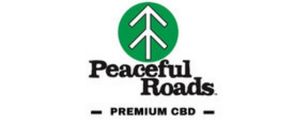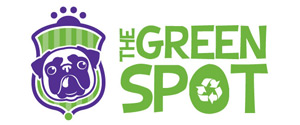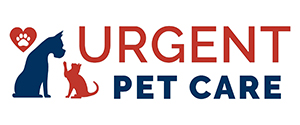- Do you subscribe to Dharma Dog Training’s Newsletter? You should.
- A Unique Campaign from The Humane Society of the United States
- Rabid bats in Omaha- Stay safe, prepared with these tips
- Springtime Activities in Omaha
- Mill Dog Monthly from Bailing Out Benji
- World Spay Day, Legislative Alert in Nebraska
- Attend the Nebraska Rescue Council’s monthly meeting this Saturday
- Five Hard-to-Ignore Reasons to Adopt!
- Paws in Pink to Benefit Breast Cancer Foundation
- VCA, Inc. Acquires MidWest Vet Specialists from Kansas State University
What is your pet’s environmental footprint? An interesting concept explored

Legislation, treaties, and manufacturing practices have changed tremendously as we continue to be more industrial and consume a greater amount of everything we can consume. For those concerned about our planet and environment, these are good measures. We’d love to be able to produce only products that are naturally safe and responsible.
In many places, we decide to do something that is (we think) environmentally responsible over something that’s not. Organic food. A car with better gas mileage. An alternative source of energy for our homes. We’d like our carbon footprints to be as small as possible. But how do we do that? How do our pets do that?
When we choose food and other pet products, we’d like to think we’re making the best decision for our companions and the planet they’ll live on. Here’s a little something we found that made us think (for the first time) about the implications of choosing what we do for our pets:
According to a recent article from The Conversation, “Current pet food trends encourage owners to feed their pets much the same foods that humans eat: high-quality “human grade” meat and organic produce, maybe even some “superfoods.” While this approach is emotionally appealing, it is not necessary for pets’ health, nor is it environmentally sustainable.”
The article goes on to say, “Pets can have a large ecological footprint, and their food is a big contributing factor. Sustainable living experts Robert and Brenda Vale suggest in their book, Time to Eat the Dog? The Real Guide to Sustainable Living, that a medium-size dog could have a similar footprint to a large SUV. Other experts have come to similar conclusions about the sustainability of feeding pets.”
So by feeding our animals the same foods we desire as environmentally-savvy consumers is not as responsible as we thought? Apparently. Here are some reasons:
- Foods now are expected to contain higher percentages of meats, protein. A meat-based diet is more impactful (environementally speaking) than a plant-based diet.
- When we see the “no byproducts” stamp on our animal’s food, we assume this is a good thing. Scientists say, however, that parts of the animal that our pets are not eating (byproducts, including organs and other tissue) go to waste. Eating byproducts, in this case, is the environmentally-friendly thing to do that we’re not doing.
- The article cited above highlights the “human grade” label that so many pet owners want to see in their foods. And while the quality standard is preferred, it’s not necessary. Our dogs don’t need to eat all human grade products, the authors say. And with the higher quality comes a higher cost in terms of money and environmental impact.
- “Grain-free” is also a popular diet for pet owners to be prescribing their pets. Though it’s popular, the article says there are no proven benefits to this (yet). Grain-free diets are also less environmentally-sustainable than other diets, they claim.
- Some vegetarian and vegan pet owners are adamant on the same diets for their pets. With concerns over animal welfare and personal beliefs systems that go against meat eating, we get it for sure. Dogs are omnivores; cats are carnivores. And a diet that includes meat is better for them, especially cats, The Conversation says. Again, the article indicates that a plant-only diet is less sustainable than other options.
- Here’s something that makes sense for sure: one way to lessen the impact you and your pets have is to consume less. Obviously. The reason is two-fold, however. The part we might not think about is obesity in pets. It’s a problem, just like it is in humans.
Ok. This article and the researchers behind it maintain that the choices we are making more routinely may not be the most environmentally-safe and sustainable ones. So what’s the answer?
“You can have both a healthy and more sustainable approach by feeding your dog or cat diets that contain moderate amounts of meat and use animal by-products, and feeding your pet only the amount of food it needs to maintain a healthy lean body weight,” the authors say. Balance is the answer. This makes sense.
And while you may not agree with the science or findings in this article, the least we can all do is be more informed. Do your homework, be aware of the implications for your decisions and roll with them. At the very least, an increased level of understanding is always beneficial.
Related Posts
Latest News
-
3 Tips for Pet Owners on Training Rescue Dogs
Owning a rescue dog can take some work compared to...
- Posted 2 weeks ago
- 0
-
Choosing the Right Pet for Your Lifestyle
Are you thinking about getting a pet but unsure what...
- Posted 4 weeks ago
- 0
-
How to Make Your Rescue Pet as Comfortable as Possible
Did you bring home a new pet from a shelter...
- Posted 2 months ago
- 0
-
How Having A Pet Can Change Your Life
Having a pet can open your heart in ways that...
- Posted 7 months ago
- 0
-
How To Improve The Life Of Your Senior Pet
Do you have an elderly fur baby and want to...
- Posted 7 months ago
- 0
-
Springtime Activities To Enjoy With Your Furry Friends
Are you preparing for warmer weather and want some ideas...
- Posted 8 months ago
- 0
-
Pros And Cons Of Microchipping Your Pets
Have you considered whether your pets should be microchipped and...
- Posted 9 months ago
- 0






















You must be logged in to post a comment Login